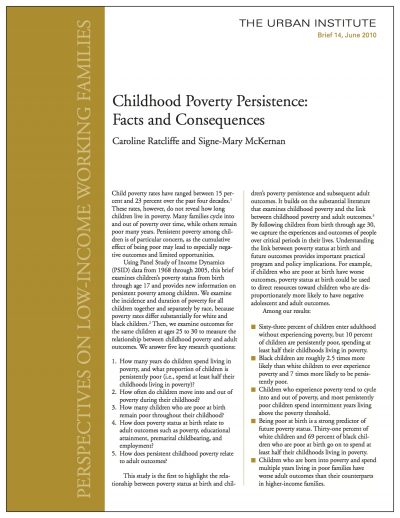Racially Disproportionate
Black children are roughly 2.5 times more likely than white children to ever experience poverty and 7 times more likely to be persistently poor.

This study is the first to highlight the relationship between poverty status at birth and children’s poverty persistence and subsequent adult outcomes. Understanding the link between poverty status at birth and future outcomes provides important practical program and policy implications.
Using Panel Study of Income Dynamics (PSID) data from 1968 through 2005, this brief examines children’s poverty status from birth through age 17 and provides new information on persistent poverty among children. It examines the incidence and duration of poverty for all children together and separately by race, as well as the outcomes for the same children ages 25 to 30 to measure the relationship between childhood poverty and adult outcomes.
Child poverty rates have ranged between 15% and 23% over the past 40 years. These rates do not reveal how long children live in poverty. The cumulative effect of persistent poverty among children may lead to especially negative outcomes and limited opportunities.
63% of children enter adulthood without experience poverty, but 10% of children are persistently poor, spending at least half their childhoods living in poverty.